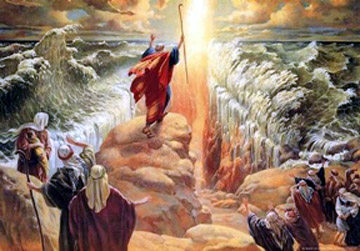
Celebrated for over three-thousand years, Passover honors the moment Moses led the Israelites out of Egypt. The festival is held around a Seder, a table full of symbolic edibles, reminding us of our faith and history. This ritual continues to inspire, being a journey from darkness to light, from bondage to freedom.
A Message of Justice and Freedom
Passover is more than just a holiday; it’s a testament to humanity’s first covenant with the Divine. This sacred festival, over 3,300 years old, commemorates the moment when Moses, the great prophet and liberator, led the Israelites out of Egypt. It is a celebration of justice, freedom, and the enduring spirit of a people who triumphed over oppression.
The Meaning of “Pesach”
The Hebrew word “Pesach” translates to “pass over”, symbolizing the transition from the darkness of disbelief to the light of faith; from slavery to freedom. In the Torah, this term means passing over, celebration, and mercy. After the Exodus from Egypt, the Torah commands that this monumental event should never be forgotten. The command was issued to remember the event forever, thus, every year on the evening of the fourteenth of Nisan, as spring begins and trees blossom, Jews worldwide celebrate Passover for seven days, eating matzah (unleavened bread) in remembrance of their liberation from slavery. It has been made explicitly clear that Nisan shall be the first month of the year for Jews.
A Celebration of Liberation
For centuries, Jews around the world have celebrated Passover on the 15th of Nisan, marking it as one of their most significant religious festivals. Families gather on the first and second nights around a special Seder table, set with symbolic foods and wine. The Hagghadah, containing the story of the Exodus, is read by every family member. They commemorate the uprising of Prophet Moses, the events of the Exodus from Egypt, and the liberation of their ancestors from the oppression of slavery. They spend the night reading texts in praise of God.
The Elements of Seder
The Seder plate is an element of this celebration that is rich with symbolism:
- Roast Lamb Shank Bone (Zeroa): Represents the lamb sacrificed during the Exodus.
- Charoset: A sweet mixture of apples, nuts, dates, and wine, symbolizing the mortar used by Hebrew slaves.
- Maror: Bitter herbs reminding us of the bitterness of our ancestor’s slavery in Egypt.
- Matzah: Unleavened bread symbolizing the haste of the Israelites’ departure from Egypt, when there was no time for the dough to rise.

Different Parts of Passover
In Jewish tradition, this ancient custom is practiced according to the Haggadah, a text compiled by Jewish scholars. Each section of the Passover celebration comes with its own interpretations and explanations, which we shall briefly point out to:
- Kadesh (Sanctification; קדש): Similar to other festivals and Shabbats, the ceremony begins with the sanctification of the holiday. Wine is drunk in four stages, accompanied by a prayer of gratitude to God and satisfaction with His commandments.
- Urchatz (Washing of Hands; ורחץ): Hands are washed several times to symbolize the purification of one’s hands, a gesture of hope for a pure heart in the new year.
- Karpas (Eating Celery; כרפס): Vegetables that grow in spring symbolize rebirth, representing the renewal of spring and the rebirth of the Israelites after their liberation.
- Yachatz (Breaking the Matzah; יחץ): Three matzot are placed on the table, representing the three patriarchs: Abraham, Isaac, and Jacob. The middle matzah is broken, and the larger half (called afikoman) is hidden to trigger children’s curiosity and keep them engaged with the ceremony.
- Maggid (Narration of the Exodus; צגד): The story of the Exodus is recounted, highlighting all the miracles and Divine interventions that led to freedom. This is often led by the eldest family member. This is one of the important sections of the celebration.
- Rachtzah (Second Washing of Hands; רחצה): This is the second time hands are washed, except this time, it is the children who wash their hands in a particular manner.
- Motzi Matzah (Blessing over the Bread; מוציא מצה): A berakhah is recited over the matzah while dipping it in salt. A berakhah is recited before eating the matzah. This is normally an important part of the celebration.
- Maror (Eating the Bitter Herbs; מרור): Bitter herbs are eaten to remember the harsh slavery our ancestors had to bear.
- Korech (Eating the Sandwich; כורך): In this part, a sandwich consisting of a bitter herb (lettuce), matzah, and charoset is prepared and eaten. Charoset is symbolic of the mortar and brick-making that Hebrew slaves were forced to do in Egypt.
- Shulchan Orech (Setting the Table; שלחן עורך): According to the Haggadah, by God’s command, everyone is invited to participate in this sacred ceremony, saying: “Let all who are hungry come and eat, let all who are in need come and celebrate Passover with us.” It is customary to eat an egg, symbolizing the behavior of righteous and pious individuals who remain steadfast and resilient in the face of life’s hardships and challenges.
- Tzafun (Eating the Afikoman; צפון ברך): After the meal, Jews traditionally recite a special berakhah. On Passover night, before reciting the concluding berakhah, the “lost” Afikomen is “found”; they eat the Afikoman, the hidden half of the matzah, which symbolizes divine reward.
- Barech (Grace After Meals; הלל נלצה): Finally, selected Psalms of David are recited as an expression of gratitude and thanks for God’s kindness and miracles during the Exodus of the Israelites from Egypt.


 فارسی
فارسی